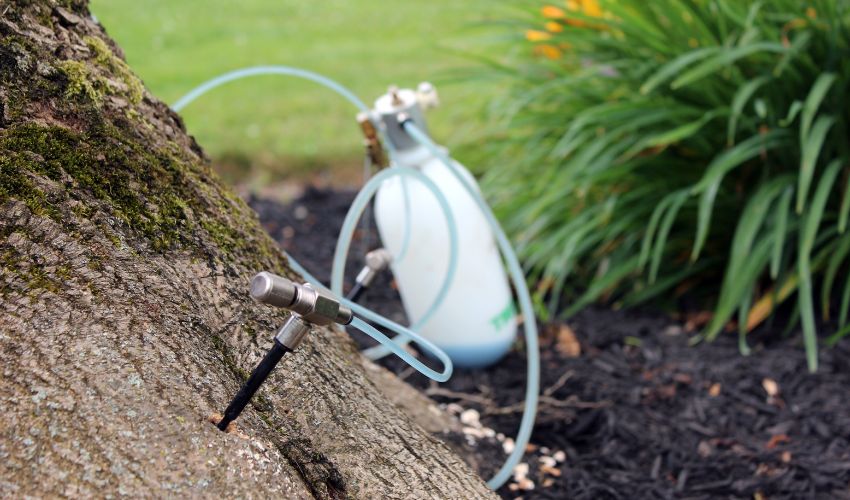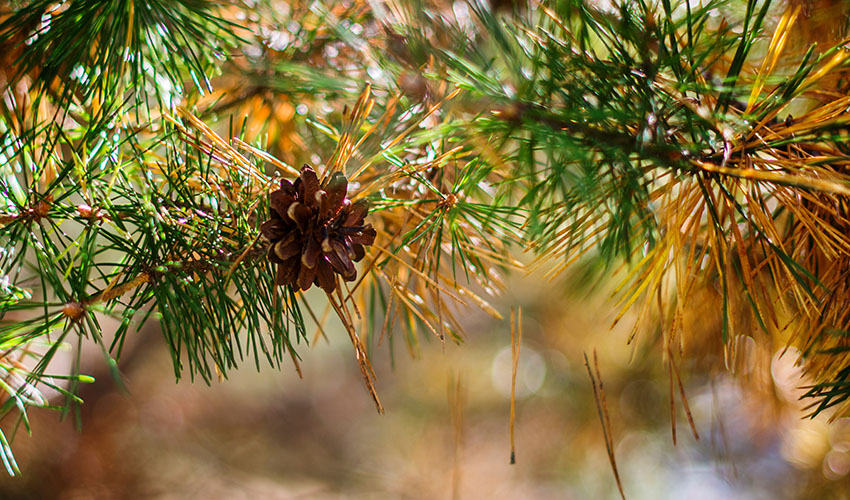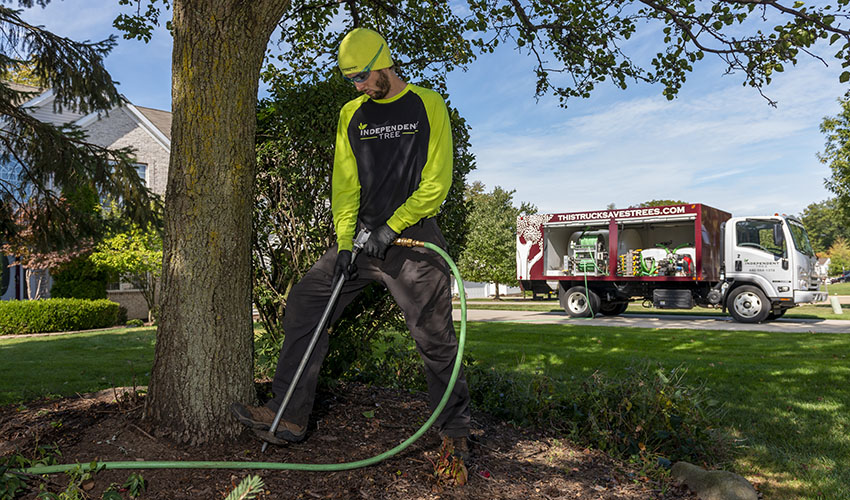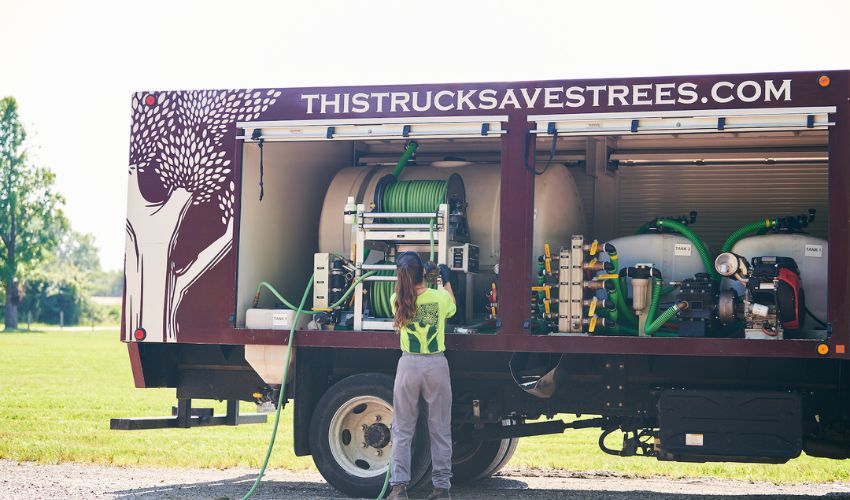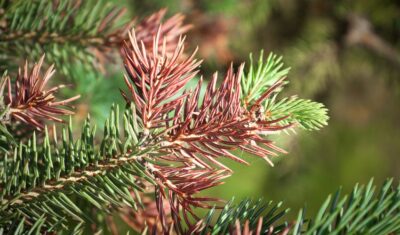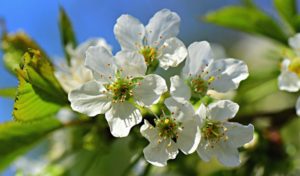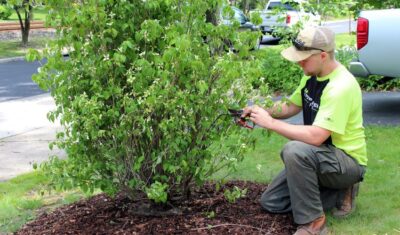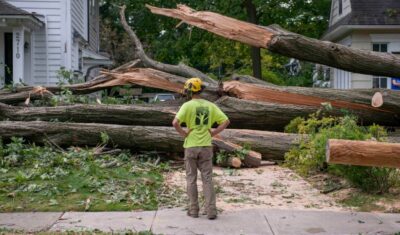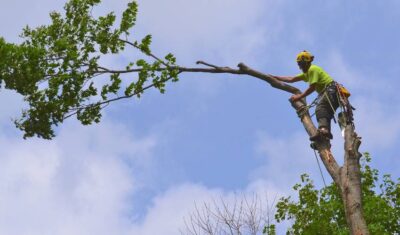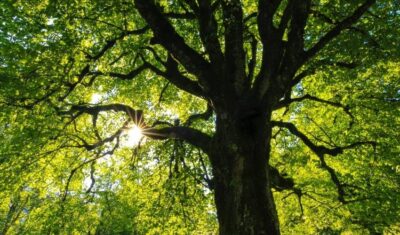For many people, the concept of Plant Health Care (PHC) is unheard of. Most of us know of our own health care plans, but what do plants and trees have to do with health?
Well, it turns out that trees:
- can get stressed,
- need nutrients, water, and sunlight,
- provide benefits for humans and wildlife,
- suffer from inclement weather, animal damage, insect pests, and diseases
With that in mind, plant health care is a way to prevent and/or treat issues related to your trees, shrubs, and landscape.
In this article, we’ll go over some of the reasons why you may want to consider adding plant health care to your property maintenance this year.
There are a lot of tree pests and diseases circulating in Ohio
Let’s start with one of the more obvious reasons that plant health care is essential. Trees are dying. Lots of them. In some cases, there was no cure for what ailed them, but in most instances, the pest or disease that eventually killed the trees was preventable or treatable.
Emerald Ash Borer has wiped out millions of trees across the United States.
Oak wilt impacts most of our oak trees in Ohio, even impacting when we prune oaks.
Elm tree populations are declining thanks to Dutch elm disease.
At a time when it is more important than ever to have the carbon dioxide absorbing, heat reducing benefits of trees, more and more of them are succumbing to various insect pests and diseases.
Other tree health issues to be aware of include:
- Fire blight
- Apple scab
- Beech leaf disease
- Chlorosis
- Maple tar spot
- Japanese beetles
- Hemlock wooly adelgid
- White pine weevil
Plus, scientists, foresters, arborists, and other professionals keep discovering new pests and diseases impacting our trees.
Some Tree Issues Are Treatable
The good news is that many tree diseases and pests can be managed or treated. Our Plant Health Care technicians are up-to-date on the latest treatments and solutions for the health issues our Ohio trees are dealing with, and are keeping an eye on those that may move to Ohio from other areas soon.
When trees are treated in time, they often have a good chance of surviving. The only remaining ash trees in some areas, for instance, are those that received treatment for the Emerald Ash Borer (EAB).
Those that weren’t treated in areas where EAB has spread have died and been removed.
Note: If you have a dead ash tree on your property, remove it as soon as possible, as the wood becomes brittle and can pose a safety risk!
There are organic treatments, horticultural oils, insecticides, fungicides, and pesticides that can fight against the attacking pests and diseases.
However, the best course of attack is always defense: preventing tree health issues before they become a problem.
Even More Tree Issues are Preventable
Sadly, not all tree issues have a treatment. Most, however, can be prevented. This is where a comprehensive plant health care plan comes in.
Consider, for instance, winter desiccation. Several shrubs and trees suffer from harsh, cold winter winds and the evergreen leaves become dry and brown.
Luckily, we have anti-transpirant sprays that, when sprayed at the correct time of year by a tree care professional, can prevent these plants from losing their moisture, keeping the leaves (and the entire plant) healthy throughout the winter.
Pests and diseases can be prevented too. If you have a type of tree that is prone to a specific issue, preventative treatments can defend against that issue impacting your tree in the first place.
Plant Health Care looks at the big picture
Plant health care is not just sprays, oils, and injections, however. It takes into account the entire property, neighborhood, and area.
If, for instance, the area is going through a dry spell, supplemental watering for your plants and trees can prevent drought stress.
Properly planting your trees (in the correct spot!) can prevent them from dying prematurely.
Things such as organic mulch, compost, and deep root fertilization go a long way in improving your soil and therefore the nutrient availability for your trees.
When you look at the health of your entire property (and the surrounding area), you consider the health of all your plants and trees, but also the various wildlife that relies on those plants and trees.
For instance, the use of a broad pesticide can remove a pest that you’re dealing with, but it also may harm the wildlife that relies on that pest for a food source.
With that in mind, you might consider a more targeted approach, or even try to attract beneficial insects to your property. Aphids can impact many kinds of plants, but they are a favorite food of ladybugs, a type of beneficial insect.
That’s why IPM (Integrated Pest Management) is part of our Plant Health Care program. It helps prevent major tree and plant issues from arising on your Ohio property using targeted treatments and preventive measures.
Learn more about Integrated Pest Management (IPM) >>
Plant Health Care Provides You With a Beautiful Yard
A poorly maintained and unhealthy landscape can be an eyesore. A well-maintained and healthy property, however, is not only pleasant for you, the property owner, but for those around you.
Diverse, native trees and plants bring color and life to your landscape. Mature, healthy trees are highly prized and sought after.
Trees bring countless benefits to your property, including reducing energy costs, lessening traffic sounds, lowering the chances of storm damage, acting as a privacy barrier, and more.
By proactively caring for your trees and landscape and preventing issues, your yard becomes not only healthy but beautiful.
Plant Health Care Saves You Money
Just as investing in your own health can prevent costly hospital bills, caring for and preventing issues to your landscape can save you from more expensive problems in the future. Maintaining and caring for your trees and plants is more cost-effective than dealing with an infestation, an advanced disease, and the cost of removing and replacing dead or dying trees.
Properly placed trees can lower energy costs – shade trees can keep your property cool in the summer and conifer trees can act as a windbreak during the winter.
Well-maintained and healthy trees increase property values, so if you plan to sell your home, keeping your plants and landscape well cared for will pay off.
Urban and Suburban Conditions Are Tough for Trees
In a forest or natural area, trees, shrubs, plants, vines, and flowers work together with fungi, wildlife, insects, and natural events to create a diverse ecosystem.
When a tree falls, it decomposes and adds organic material and nutrients back into the soil for the still-growing plants and trees to utilize. A system of mycorrhizae (a fungus) connects tree roots to form a network in which the trees can share nutrients and warn of attacking pests.
Plants and trees produce food for birds, who eat the fruit or nuts and help transport the tree seeds to other areas, depositing them and allowing new plants and trees to grow.
There are more unique and wonderful things about trees in rural and natural settings, but the important thing to know is that it varies greatly between urban and suburban settings.
In many urban and suburban settings:
- The ground is compacted from pedestrian traffic and heavy construction vehicles, making it difficult for roots to spread or for oxygen to reach the tree roots
- Trees are limited by space and are often confined next to buildings, sidewalks, or streets, leaving them cramped and/or over pruned
- Roots of trees become girdled due to lack of space or incorrect planting practices
- The soil is nutrient deficient due to the lack of decomposing older trees and other natural debris
- Birds and other wildlife lack spaces to shelter from the elements and find food, leading to them entering places like garages and attics
- Trees become easily stressed from lack of water, too much sun or wind exposure, or other situations, often from being planted in the wrong place
- Trees are improperly pruned, causing stress to the tree, wounds for pests or diseases to enter, and poor structural support that can lead to damaged branches or other issues
To counteract these issues, trees benefit from plant healthcare services such as:
- deep root fertilization
- arborist consultations
- preventive sprays
- planting a variety of plants and trees on your property and keeping them healthy
- and more!
You can also improve the health of your trees by:
- Adding organic mulch
- Incorporating compost
- Scheduling regular professional pruning
- Removing and destroying diseased branches or trees from your property before they can infect other trees
- Encouraging beneficial insects
- Allowing wildlife to make use of your property (within reason)
- Watering trees when needed
- Planting trees in the best locations based on their needs and growing habits
You can read other articles about how to care for your trees and property in the “blog” section of the Independent Tree website.
Independent Tree Can Help Keep Your Property Healthy, Safe, and Beautiful
To learn more about our Plant Health Care (PHC) program, schedule a property inspection, or begin planning a healthy year for your Ohio property, contact Independent Tree.
Ready to Set up Your Annual Program?
Regular maintenance and preventive plant health care are excellent ways to stop and/or treat issues related to your trees, shrubs, and landscape.Recent Articles
Topics
About The Author

STAY IN THE LOOP
WITH OUR
LATEST UPDATES
"*" indicates required fields

